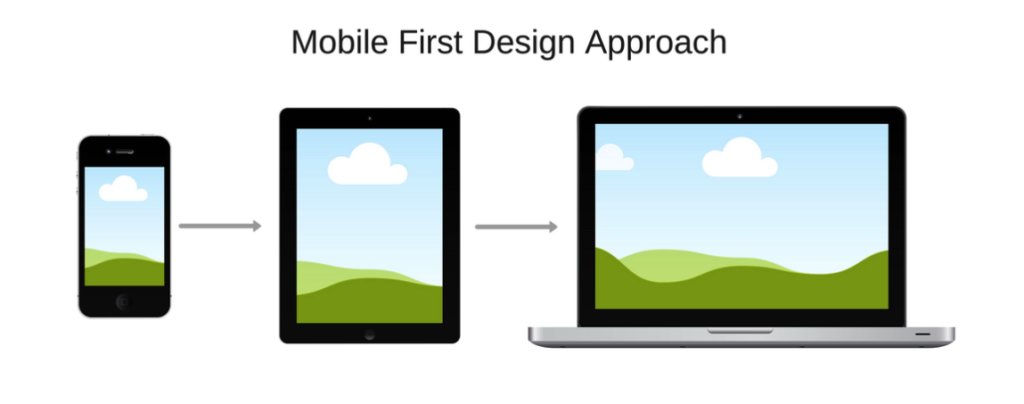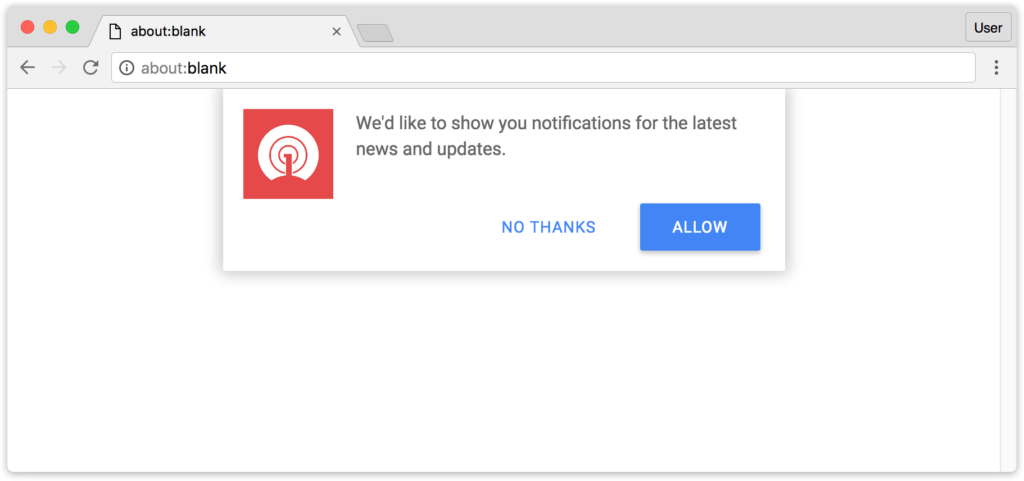When it comes to mobile advertising marketers have never had more control over how they reach their audience. As a marketer, you have access to a wide range of tools for personalizing marketing content.
But with so many options for reaching the right audience and so many ways to communicate your brand message, marketers are constantly walking a fine line between delivering the kind of personalized experience many users are coming to expect and spamming people in ways that are perceived as creepy or intrusive.

Source: pixabay.com
This guide will help you create personalized mobile ads that resonate with your audience without spamming people.
The benefits of a Mobile-First strategy
Most digital marketing works on the principle that the main point of contact users have with your brand online is through desktops and laptops, with people accessing your content from their home or office computers.

Source: altexsoft.com
But the world of digital marketing has been completely transformed and we’ve entered a new era of mobile dominance.
When UK consumers are asked what is the most important device used to connect with the internet most people (48%) say it’s smartphones, with laptops and desktop computers collectively taking second place. In the US more than half (51%) of web browsing time comes from mobile.
By 2025 over 72% of people are expected to access the web solely by their smartphones. And what’s more, worldwide growth in eCommerce is largely driven by mobile, which accounts for 58.9% of all eCommerce sales.
Adapting to the new era of mobile dominance
To win in the era of smartphone dominance you need to adopt a “mobile-first” strategy.
Rather than seeing mobile as just one of the ways to reach your audience, you should think of it as the primary way to reach your audience. Your digital marketing design should all work to serve this purpose.
For starters, you need to have a website that is fully responsive, which means that it adapts to suit the device by which it is being accessed.
The primary question about your website should be, does it work on mobile?
It’s no longer acceptable for mobile to be an afterthought, it has to be fundamental to the way you think about advertising.
The user focus is shifting to mobile
Smart brands are realizing two crucial insights:
- The user experience (UX) is an essential element when it comes to selling your products and selling your brand
- The UX focus needs to pivot towards mobile devices.
So what are the most effective ways to reach your audience via mobile?
There are two main planks to a solid mobile-first marketing approach.
These are… mobile ads and push notifications.
Mobile ads
When it comes to mobile ads it’s all about creating content that resonates with your target audience and that is relevant to the context in which they are delivered.
For example, promoted tweets need to work in the context of the unique features of Twitter, taking into account the way content is created and consumed and the language and etiquette of the platform.
This is true with any other social media platform that you are advertising on. They each have their own formats for content, their own hidden rules of behavior and their own sets of user behaviours and expectations. Get these wrong at your peril!
There is of course much more to mobile advertising than social media, with channels like:
- Apps
- Websites and progressive web apps (PWAs)
- SMS
- Etc…
To use each channel effectively you have to understand the context of each one.
Push notifications
The second big way to reach people on mobile is through push notifications.
Users have to subscribe to your push notifications via your website or app (this happens by default with Android, but requires an opt-in via iOS).

Source: appinstitute.com
People don’t want to get random notifications, they want to get predefined content.
So when you motivate people to sign up for push notifications you have to let them know what they will get when they subscribe.
Amazingly, most sites and brands don’t personalize push notification opt-ins, so if you do this you will get solid results and be a step ahead of the competition.
A survey by Localytics found that 49% of people prefer push notifications to be based on their own stated preferences rather than on their in-app behaviour and that these preference-based notifications would encourage them to use the app more.

Source: info.localytics.com
There is a fine line to walk between personalization and intrusive spam.
The Localytics results also show that users are often split on whether a certain form of personalization would encourage them to use the app more or less.
For example, despite 32.5% of users reporting that apps that track in-app behaviour and deliver content based on that would make them use the app more, nearly the same amount of people (29.2%) said such personalization would make them use the app less.
The best way to get around this problem is to make sure that users can choose how their mobile experience is being personalized, for example adding an opt-in screen to your mobile app asking how users would like push notifications and marketing content to be personalized.
The importance of mobile personalization
To get the right balance between personalization and creepy “they know too much” reactions from users, expectations, and context are key.
Mobile marketers who get this balance right are reaping the rewards.
90% of marketers say that personalization is a significant contributor to profitability, according to Google. And it’s not just marketers who believe personalization is important. 61% of people actually expect brands to tailor their experience to their preferences. What’s more, 46% of consumers prefer to use their smartphones for the entire journey from research to purchase.
Context and personalization
The mobile app Drippler is designed to analyze the hardware and OS of your smartphone and deliver users useful tips, tricks and app suggestions. It also analyzes the content users read in-app and tracks other in-app behaviours to provide a highly personalized user experience. It is a hit with users and has had over 5 million downloads.

Source: techglimpse.com
Drippler gets personalization right because its data and behavior tracking is relevant to the service it is providing; troubleshooting your smartphone to help you get the best out of your mobile experience.
If a weather app acted in the same way it might feel intrusive because it wouldn’t be providing a level of personalization that is appropriate for the context. So when it comes to personalization, context is king.
How to personalize mobile ads without spamming people
Mobile marketing offers a wide range of channels through which to engage your audience, from search display ads, to in-app ads, video ads, social media promotions, SMS, push notifications, geotargeting, QR codes, and more.
Developments in audience targeting and segmentation, as well as data tracking and artificial intelligence, give us unlimited possibilities for mobile ad personalization.
But that also means there are many, many more ways to spam people than ever before, and it’s never been easier. For many marketers, this temptation is too hard to resist, but it’s a counterproductive strategy that will ultimately drive people away from your brand and make it extremely hard to build up a loyal customer base in the long run.
So here’s a list of spammy things to avoid…
Sending too many messages – there needs to be a solid rationale for each marketing message you send. Ask yourself why you’re sending a particular message. If the answer is ‘because I can’ you’re probably sending spam.
Sending irrelevant content – despite the many ways it’s possible to personalize mobile ads many brands still send irrelevant content rather than taking the time to segment their audience. You should only send content you believe will resonate with your audience segments.
Sending useless information – every piece of content you send to your audience has to have some practical value for them. Sending updates about how brilliantly your company is doing may be a tempting flex, but does your audience really care? There’s a difference between saying, “look how brilliantly we’re doing,” and “because we’re doing so well we’d like to offer you a special discount…”.
Ignoring communication preferences – different people like to be contacted in different ways. SMS might be really convenient for some people and incredibly intrusive to others. So you should ask users about their communication preferences and always respect those preferences.

Source: uxdesign.cc
How to improve your mobile advertising
Making improvements to the way you execute mobile marketing is a solid way to avoid spamming people.
As a general rule of thumb, the more care and attention you pay to the kind of content you create and how you distribute it the less spammy your marketing behaviour will be and the more effective your mobile marketing will become as a result.
Here are some tips on how to avoid mobile spam by improving your mobile advertising strategy…
Diversify content creation
Too much of the same thing becomes boring, and in the marketing world, too much of the same thing becomes spammy.
So make sure you actually take the time to create a range of content for each of your mobile marketing campaigns.
Marketing guru and entrepreneur Garry Vaynerchuk argues that brands need to be creating upwards of 100 pieces of content a day to take advantage of the new era of marketing, an era that has been shaped by the proliferation of user-generated social media content, an era where people expect meaningful communication of ideas and values, not the digital equivalent of junk mail.

Source: slideshare.net
Bring value to your audience
In the old days of marketing marketers essentially said this to their audience:
“Hey, if you buy this product you will get all this great value!”
But today’s model doesn’t work like this. You need to instead be saying this to your audience:
“Hey, this piece of content is packed with stuff you’ll find really valuable, check it out!”
Can you see the difference between the two approaches? One offers value upfront and one promises value if users buy. Offering value upfront wins all the time.
Once people engage with your content (and they’ll only do this if they like it!) they have entered your sales funnel and you can then start weaving your calls to action into your content to nurture your leads on their customer journey. But the era of opening with a hard sell is basically dead. Instead, a series of soft sells should be offered to your audience to get them in the mindset to buy your products or services.
Properly segment your audience
The best way to make your mobile marketing campaigns more effective is to send relevant content to targeted audiences. The way to target your audiences in a relevant way is to create audience segments based on data you collect from your users. Once you’ve segmented your audience you can then only send relevant content to people. This will make your ads far less spammy and make them more effective.
Be smart about personalization
To go about personalizing your mobile ads in the right way you need to start with a solid foundation of content. You should clearly present personalization options to your audience upfront. This could be the first screen they see when they download your app, or part of your signup forms when you capture user data.
You should also make sure your notifications clearly explain what users will get from them. For example:
“To give you the best user experience this site would like to send you notifications based on your browsing history.”
OR –
“Sign up to push notifications to get the latest offers relevant to you!”
If users know how you are personalizing their experience and they’ve signed up to it then they won’t feel like you’re intruding on their privacy. It’s as simple as that.
Personalization is the future, spam is the past…
We’re in a new world where the user experience is the most vital marketing asset you can create. It’s essential that mobile advertising puts the user first, and understands and respects their expectations and preferences.
To get mobile personalization right we have to understand the principles of informed consent, managed expectations, and clear, open communication. Once we start on this basis we find ourselves in a position to take advantage of sophisticated mobile personalization strategies that will deepen your relationship with your audience and provide the maximum value and inspiration on their customer journey.
About the Author
This is a guest post by Izaak Crook, the Head of Marketing at AppInstitute, a SaaS App Builder platform that allows anyone to create their own iOS and Android app without writing a single line of code.





